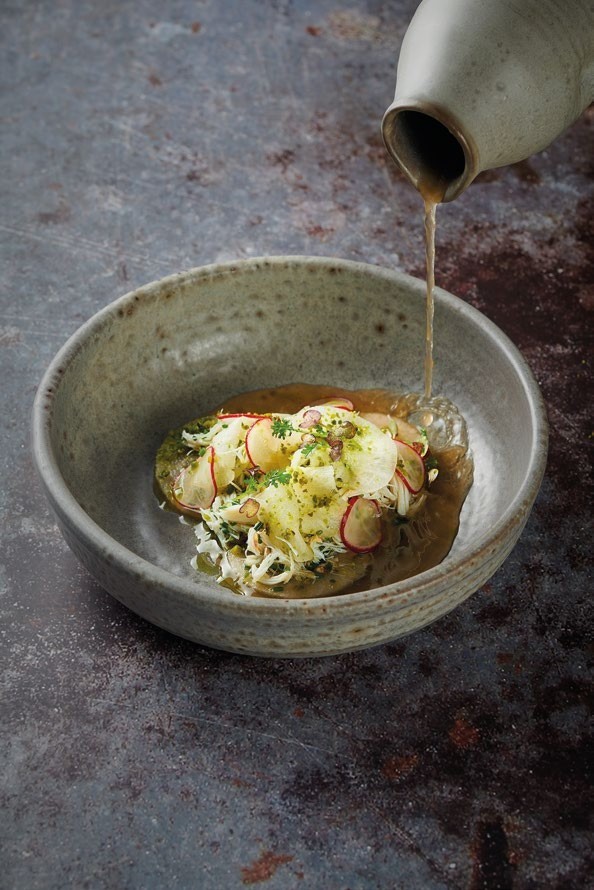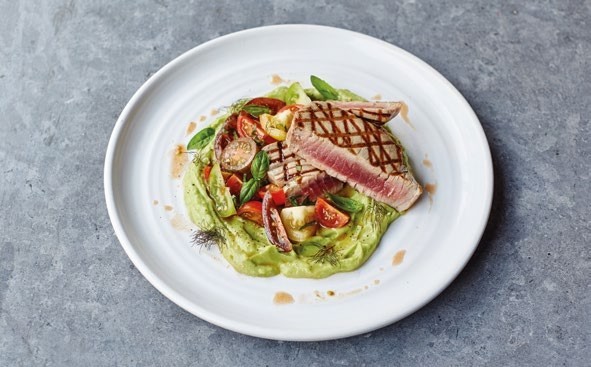Restaurants are doing their part with farm-to-table offerings, biodegradable packaging and certified produce.




Burgers will form the bulk of the menu items at the Jewel outlet.
PINK FISH – EVERYTHING SALMON
Norway’s next greatest export, after A-ha and Ole Gunnar Solskjaer, is salmon. And with the opening of Pink Fish at Jewel Changi Airport, the brand’s firstever branch outside Norway, we’re about to get plenty of the fast-food variety of it.
Head chef Geir Skeie, 38, is big on sustainability. He loves salmon as a hero ingredient as it is the most sustainable source of protein (the carbon footprint for each kilo of farmed salmon is much lower than for other meats), and he chooses suppliers with transparent and traceable production.
Skeie will create an internationally inspired, salmonfilled, made-to-order menu of burgers, salads, poke bowls and hot stew pots.
Another plus? The packaging will be biodegradable… and edible. So the question is: Will the packaging be as tasty as its European Burger? Add the barbecue sauce and mayo to find out.


SALTED & HUNG – SINGAPORE FARMS TO TABLE
Local ingredients = less of a carbon footprint. Chef owner Drew Nocente, 37, of this award-winning contemporary Australian restaurant, grew up on a farm near Brisbane and now champions local produce in his new “minimal waste” menu in Singapore.
He uses local pearl grouper in his Grouper, Infused Soy, Charcoal & Fermented Prawn Butter dish. He also cuts waste by using ingredients for more than one thing: The grouper head, for example, is used to make the broth the grouper dish sits in. And the kelp oil the restaurant makes is transformed into creamy kelp butter, used in the delicate Uni & Caviar Tart.
Produce from overseas is sustainably sourced: The sake-soaked Yarra Valley trout roe comes from trout that’s been milked (rather than killing the fish for its roe).
And leftover sourdough trimmings are turned into sourdough ice cream, blended with IPA beer for an extra kick.


Herbs for the restaurant chain’s dishes come from its Vivocity garden.
JAMIE’S ITALIAN THE SUSTAINABLE NAKED CHEF
Health food advocate Jamie Oliver is great at clearing out the junk. He’s equally strict with sustainability: Through his JOSIE (Jamie Oliver Supplier Information Exchange) system, his restaurants enforce strict rules that suppliers must adhere to in an effort to support a fairer, more sustainable food system.
A Jamie’s Italian dish like Chicken Al Mattone features free-range chicken from Johor-based Toh Thye San Farm, a provider of ethically farmed French chickens (the poultry are housed comfortably). Another trusted supplier is Silver Fern Farms, which upholds New Zealand’s high standards of animal welfare. The chain also grows its own herbs (with natural fertilisers), and staff are trained to minimise food waste.
Menu descriptions clearly indicate how the ingredients stay true to the restaurant chain’s ethos – a fun read as you order your next Italian Steak Tagliata.
TEXT NATASHA VENNER-PACK























